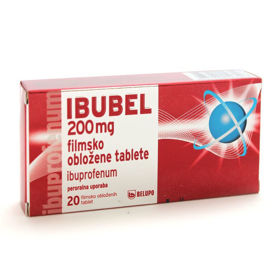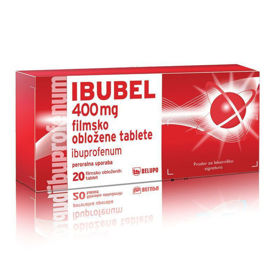Vprašanje stranke:
Kako poteka histeroskopija? Vprašanje anonimne stranke
Odgovor farmacevta:
Histeroskopija je postopek, ki omogoča neposreden pogled v notranjost maternice s pomočjo tankega instrumenta, imenovanega histeroskop. Ta postopek se uporablja za diagnosticiranje in v nekaterih primerih tudi za zdravljenje različnih ginekoloških stanj, kot so nenormalne krvavitve iz maternice, ponavljajoči se splavi, neplodnost, prisotnost materničnih polipov ali fibroidov, nepravilnosti materničnega vratu in drugo.
Pred začetkom postopka se običajno izvede predhodna ocena zdravstvenega stanja pacientke, vključno z anamnezo, fizičnim pregledom in morebitnimi preiskavami, kot so ultrazvok ali krvne preiskave. Pri nekaterih pacientkah se lahko pred postopkom priporoči uporaba antibiotikov za preprečevanje morebitnih okužb.
Sama histeroskopija se lahko izvede v bolnišničnem okolju ali ambulantno, običajno pod lokalno ali splošno anestezijo, odvisno od potreb in preference pacientke ter zahtevnosti postopka. Pred začetkom postopka se pacientka običajno postavi v ginekološki položaj, podoben tistemu pri običajnem ginekološkem pregledu.
Nato se v nožnico vstavi histeroskop, ki je tanek in prilagodljiv instrument. Histeroskop ima na koncu majhno kamero, ki omogoča zdravniku, da vidi notranjost maternice na zaslonu. Poleg tega histeroskop omogoča tudi vnos tekočine, običajno slane vode oziroma sterilne vode, v maternično votlino, kar pomaga razširiti prostor in omogoča boljši pregled.
Med postopkom lahko zdravnik skrbno pregleda notranjo steno maternice, da odkrije morebitne nepravilnosti, kot so polipi, fibroidi, nenormalnosti endometrija ali druge patologije. Če se med histeroskopijo odkrijejo kakršne koli nepravilnosti, se lahko istočasno izvede tudi terapevtski poseg, na primer odstranitev polipov ali fibroidov ali pa biopsija tkiva za nadaljnjo analizo.
Po končanem postopku se histeroskop odstrani iz maternične votline, in pacientka se lahko prebudi iz anestezije, če je bila uporabljena splošna anestezija. Po potrebi se lahko bolnico opazuje nekaj časa, preden se dovoli odhod domov. Po histeroskopiji je pričakovati nekaj nelagodja ali krčev v trebuhu, pa tudi rahlo krvavitev iz nožnice. Te simptome lahko olajšate s počitkom in jemanjem protibolečinskih zdravil, ki jih je predpisal zdravnik. Priporočljivo je, da se izognete težkim dejavnostim in spolnim odnosom nekaj dni po posegu.
Pacientka bo morda prejela tudi navodila za nadaljnje spremljanje ali zdravljenje glede na rezultate histeroskopije. Pomembno je, da se držite navodil zdravnika in se posvetujete z njim v primeru kakršnih koli neobičajnih simptomov ali zapletov.
Kako dolgo je okrevanje po histeroskopiji?
Okrevanje po histeroskopiji, postopku, pri katerem se s tankim instrumentom, imenovanim histeroskop, pregleda notranjost maternice, je običajno precej hitro. Večina žensk lahko pričakuje kratko obdobje okrevanja, običajno nekaj ur ali dni po posegu. Po posegu lahko pride do blagega nelagodja, krčev ali rahle krvavitve, vendar se ti simptomi običajno umirijo v nekaj dneh.
Ženske se običajno lahko vrnejo k svojim običajnim dnevnim dejavnostim v roku nekaj dni, čeprav lahko zdravnik priporoči, da se izognejo napornim dejavnostim ali spolnim odnosom za krajše obdobje, da se omogoči popolno okrevanje. Pomembno je, da sledite navodilom zdravnika po posegu, da tako pospešite okrevanje in preprečite morebitne zaplete.
Zakaj se izvaja histeroskopija?
Histeroskopija se izvaja iz več razlogov, ki vključujejo diagnosticiranje in v nekaterih primerih tudi zdravljenje različnih ginekoloških stanj.
Nekateri glavni razlogi za izvajanje histeroskopije vključujejo:
- Diagnostika nepravilnosti v maternici: histeroskopija omogoča neposreden pogled v notranjost maternice, kar zdravnikom omogoča, da odkrijejo in diagnosticirajo različne nepravilnosti, kot so polipi, fibroidi, nenormalnosti endometrija ali druge patologije.
- Nenormalne krvavitve iz maternice: histeroskopija se pogosto izvaja pri ženskah, ki trpijo za nenormalnimi krvavitvami iz maternice, kot so obilne menstruacije, krvavitve med ciklom ali krvavitve po menopavzi, da se ugotovi vzrok teh težav.
- Neplodnost: pri ženskah z neplodnostjo se lahko izvede histeroskopija za pregled maternice in odkrivanje morebitnih nepravilnosti, ki bi lahko ovirale zanositev ali nosečnost.
- Ponavljajoči se splavi: histeroskopija se lahko izvede tudi pri ženskah, ki so imele ponavljajoče se splave, da se ugotovijo morebitni vzroki za te ponavljajoče težave.
- Zdravljenje: poleg diagnostičnih namenov se histeroskopija uporablja tudi za terapevtske namene. Na primer: polipi, fibroidi ali druge nepravilnosti, ki se odkrijejo med histeroskopijo, se lahko takoj odstranijo že med postopkom.
- Biopsija tkiva: med histeroskopijo se lahko odvzamejo tudi vzorci tkiva (biopsija) maternične stene ali drugih nepravilnosti za nadaljnjo analizo in diagnozo.
Ali je histeroskopija boleča?
Histeroskopija običajno ni zelo boleča, vendar pa lahko pri nekaterih ženskah povzroči določeno stopnjo nelagodja ali krčev. Stopnja bolečine med postopkom lahko variira med posameznicami in je odvisna od več dejavnikov, vključno s stopnjo občutljivosti na bolečino, vrsto uporabljene anestezije in samega postopka. Pred začetkom postopka se tako lahko uporabi lokalna anestezija, da se omili nelagodje pri vstavljanju histeroskopa skozi maternični vrat. V nekaterih primerih se lahko uporabi tudi splošna anestezija, kar lahko pacientki omogoči, da med postopkom ne čuti posebnih bolečin.
Med postopkom lahko ženska občuti nekaj pritiska, nelagodja ali rahle bolečine, še posebej, ko se histeroskop vstavi v maternično votlino ali ko se izvaja terapevtski poseg, kot je odstranjevanje polipov ali fibroidov. Vendar pa se večina žensk lahko spopade s tem trenutnim nelagodjem, saj postopek traja le kratek čas, običajno od 15 do 30 minut. Po postopku lahko ženska doživi tudi nekaj nelagodja ali rahle krvavitve iz nožnice, vendar se ti simptomi običajno umirijo v nekaj dneh po postopku. Pomembno je, da se pred postopkom pogovorite s svojim zdravnikom o morebitni bolečini in nelagodju ter se seznanite z možnostmi za obvladovanje bolečine, vključno z uporabo anestezije ali protibolečinskih zdravil.
Zanimivo branje: Histeroskopija okrevanje
Zanimivo branje: Odstranitev maternice








 Facebook
Facebook
 Instagram
Instagram
 info@moja-lekarna.com
info@moja-lekarna.com

